Choosing the Right Pallet Inverter for Brazil's Demands in Automation in Busy Meatpacking and Pharma Zones
Your operations in Brazil's meatpacking or pharmaceutical sectors are running at full speed. But there's a constant bottleneck in your logistics: pallet handling. Moving products from wooden shipping pallets to clean, in-house plastic pallets is slow, manual, and risky. You worry about contamination, product damage, and failing to meet the strict standards of ANVISA or MAPA. These issues don't just slow you down; they threaten your entire operation with costly recalls and damage to your brand's reputation. The solution is not just any piece of equipment, but a carefully selected pallet inverter designed specifically for the unique, high-stakes environments of Brazil's busiest industries.
The right pallet inverter for Brazil's demanding meatpacking and pharma zones is a fully automated, stainless steel model designed for strict hygiene. It must offer precise, adjustable clamping for product safety and seamlessly integrate with existing conveyors and factory management systems to maintain high throughput. For meatpacking, Grade 304 stainless steel is often sufficient, while pharmaceutical applications typically demand crevice-free designs and higher-grade 316L steel to meet cGMP standards.
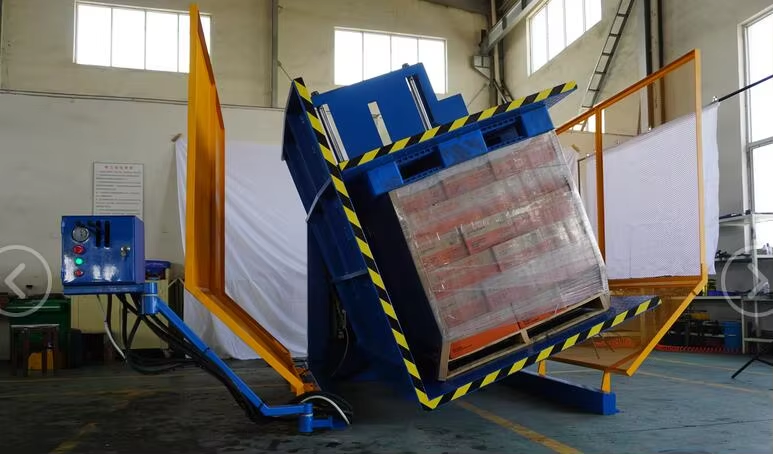
I've spent my entire career in the packaging machine industry, from an engineer on the factory floor to founding my own company, SHJLPACK. I’ve seen firsthand how the right piece of automation can transform a business, and how the wrong one can become a constant headache. Choosing a pallet inverter isn't just about buying a machine; it's about investing in the safety, efficiency, and compliance of your entire production line. Let's walk through the critical questions you need to ask to make the right choice for your facility in Brazil.
How do hygiene and material requirements differ between meatpacking and pharma applications in Brazil?
You know that a standard, painted steel machine won't survive in your facility. The constant moisture in a meatpacking plant or the stringent sterility requirements of a pharmaceutical cleanroom would destroy it. But simply asking for "stainless steel" is not enough. Choosing the wrong grade or design can lead to catastrophic failures, like microbial contamination that forces a product recall or corrosion that causes unexpected downtime and costly repairs. To truly protect your products and your investment, you must understand the specific hygienic design principles that apply to your industry.
For Brazilian meatpacking facilities, the primary need is for equipment that can withstand aggressive, high-pressure washdowns with cleaning agents. This means Grade 304 stainless steel construction with an open, easy-to-clean frame is essential. For pharmaceutical applications, the focus shifts to preventing microbial contamination, which requires higher-grade 316L stainless steel, crevice-free designs, and highly polished surfaces to comply with Good Manufacturing Practices (GMP).
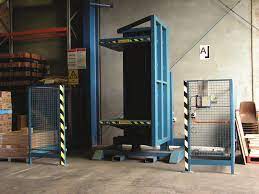
Dive Deeper
When I work with clients in these sectors, we don't just talk about the machine's function; we focus intensely on its construction. It's a lesson I learned early in my career. A client in the food industry bought a machine that was technically stainless steel, but it was full of hollow tubes and sharp internal corners. After a few months, they couldn't figure out the source of contamination in their line. We discovered that water and bacteria were trapped inside the machine's frame, impossible to clean. They had to scrap the machine. This experience taught me that the details of hygienic design are not optional—they are fundamental.
Material Selection: A Tale of Two Steels
The choice between 304 and 316L stainless steel comes down to a trade-off between cost and corrosion resistance. Your specific environment in Brazil will dictate the right choice. Meatpacking plants use strong detergents and sanitizers, but the main challenge is water. Grade 304 offers excellent resistance to the rust and corrosion caused by water and most cleaning chemicals. It provides the durability needed for a harsh, wet environment at a more economical price point. Pharmaceutical manufacturing, however, often involves more corrosive substances, such as saline solutions or chlorides. Here, Grade 316L is the superior choice. The addition of molybdenum gives it enhanced protection against pitting and crevice corrosion, which is critical in sterile environments where even microscopic flaws can harbor bacteria.
| Feature | Grade 304 Stainless Steel | Grade 316L Stainless Steel | Best For |
|---|---|---|---|
| Primary Use | General-purpose, food & beverage | Pharmaceutical, marine, chemical | Brazil Meatpacking |
| Corrosion Resistance | Good against water, most foods | Excellent, especially against chlorides | Brazil Pharma |
| Key Alloying Element | Chromium, Nickel | Chromium, Nickel, Molybdenum | |
| Cost | Lower | Higher (15-25% more) | |
| Cleanliness | Good for washdown environments | Superior for sterile environments |
Design for Cleanability (Hygienic Design)
The material is only half the story. The way the machine is built is just as important. In both meatpacking and pharma, you need to look for designs that eliminate places for bacteria to hide. This means:
- Open-Frame Construction: Avoid hollow tubes or enclosed frames. An open design allows you to see and clean every surface.
- Sloped Surfaces: All flat surfaces should have a slight slope to ensure water and cleaning solutions drain away completely, preventing puddles where microbes can grow.
- Polished, Continuous Welds: Rough welds have tiny cracks and pits that are perfect hiding spots for bacteria. All welds should be ground smooth and polished. There should be no gaps or seams.
- No Exposed Threads or Sharp Corners: These areas are notoriously difficult to clean. All components should be smooth and rounded.
Compliance with Brazilian Regulations
In Brazil, both ANVISA (for health and pharma) and MAPA (for agriculture and meat) have strict regulations. They don't just inspect your final product; they inspect your process and your equipment. Having a pallet inverter built with these hygienic design principles is not just good practice—it's a key part of your compliance strategy. It demonstrates to auditors that you have control over potential contamination points, which can make inspections smoother and help you avoid fines or operational shutdowns.
What level of automation is necessary for pallet inverters in high-throughput zones?
Your production line is fast and efficient, processing thousands of units per hour. But then it hits a wall: the pallet exchange area. Here, workers are manually re-stacking boxes, a process that is slow, physically demanding, and prone to error. This manual bottleneck slows down your entire operation, drives up labor costs, and introduces a significant risk of worker injury and product damage. You know you need automation, but how much is enough? Choosing the wrong level can mean you've either overspent on a system you don't need or, worse, invested in a machine that still can't keep up.
For the high-speed, high-volume meatpacking and pharmaceutical zones common in Brazil, a fully automated, inline pallet inverter is the only practical solution. This level of automation allows the machine to operate without human intervention, integrating directly with upstream and downstream conveyors, AGVs, and your facility's Warehouse Management System (WMS) or Manufacturing Execution System (MES). This ensures maximum throughput, reduces labor dependency, and enhances safety.
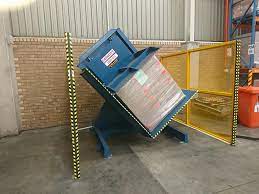
Dive Deeper
I remember visiting a large beverage plant in São Paulo. They had a semi-automatic pallet inverter. An operator had to use a forklift to load a pallet, push a button, wait for the cycle, then use the forklift to remove both the new pallet and the old one. During peak times, two forklifts and two operators were dedicated just to this one task, and they were still creating a traffic jam in the warehouse. They were running a 21st-century production line with a 20th-century logistics process. We replaced their system with a fully automated inline model. It now takes pallets directly from the production line conveyor and feeds them to the automated warehouse, with zero human interaction. They re-assigned the two operators to more valuable tasks and eliminated the forklift traffic entirely.
Comparing Automation Levels
The choice depends on your specific throughput and labor strategy. Let's break it down simply.
| Automation Level | How It Works | Throughput | Labor Required | Best Suited For |
|---|---|---|---|---|
| Manual | Not a machine, just manual labor | Very Low (< 10 pallets/hr) | 2-3 Workers | Very small, low-volume operations. Not suitable for meat/pharma. |
| Semi-Automatic | Operator loads/unloads with forklift | Low (15-25 pallets/hr) | 1 Operator + Forklift | Mid-size operations, offline tasks, where speed is not critical. |
| Fully Automatic | Integrated into conveyor line | High (40-60+ pallets/hr) | 0 (Supervisory only) | Busy meatpacking, pharma, and distribution centers in Brazil. |
For the busy zones described in the title, the choice is clear. The goal is to remove the human bottleneck entirely. Full automation is the only way to achieve the speeds and consistency required to keep up with modern production machinery.
Integration is Key: Connecting to Your Factory's Brain
A modern pallet inverter is not just a standalone machine; it's a data node in your smart factory. This is something that forward-thinking leaders like Javier Morales understand well. He wants to deploy MES, IoT, and data analytics, and the equipment on the floor must support that vision. An automated pallet inverter should have a PLC (Programmable Logic Controller) that can communicate with your central factory systems via protocols like Ethernet/IP or PROFINET. This integration allows for:
- Automated Work Orders: The MES can tell the inverter what load is coming next and what process to run.
- Real-Time Status Monitoring: You can see if the machine is running, stopped, or has a fault from your central control room.
- Data for Traceability: In the pharma industry, you can log which batch of product was moved to which plastic pallet, creating a secure digital record for compliance.
- Predictive Maintenance: The machine can track its own cycles and motor hours, sending alerts when maintenance is due, helping you achieve the 95% uptime goal Javier aims for.
Safety Systems for Automated Operations
When you remove the operator, you must replace them with a robust safety system. In a busy, high-traffic area, this is non-negotiable. A fully automated system must be completely guarded to prevent anyone from accidentally entering the operational area. This includes:
- Physical Fencing: To create a secure perimeter.
- Light Curtains or Area Scanners: These create an invisible barrier of light. If a person or object breaks the beam, the machine stops instantly.
- Safety Interlocks on Doors: Access doors must have switches that stop the machine if they are opened.
- Emergency Stops: Clearly visible and accessible E-stops are required on all sides of the cell.
Automation isn't just about speed; it's about creating a process that is faster, more reliable, and safer than any manual alternative.
How can the right pallet inverter improve ROI and reduce operational costs?
As a business owner, you scrutinize every major investment. A new piece of automated equipment is a significant capital expense, and you need to see a clear path to a strong return on investment (ROI). You might be thinking that a pallet inverter is just a "nice to have" machine that solves a minor problem. But from my experience helping hundreds of clients, I can tell you that the right machine is not a cost center; it's a powerful tool for reducing operational costs and boosting your bottom line. It directly addresses the challenges of cost pressure and the need to improve profit margins.
A well-chosen pallet inverter delivers a strong ROI by directly cutting labor costs, dramatically reducing product damage during handling, and accelerating your entire logistics workflow. It also generates savings by allowing you to switch from expensive rental or high-quality shipping pallets to cheaper, reusable in-house pallets. Most importantly for Brazil's regulated industries, it helps you avoid the immense costs associated with non-compliance and product recalls.
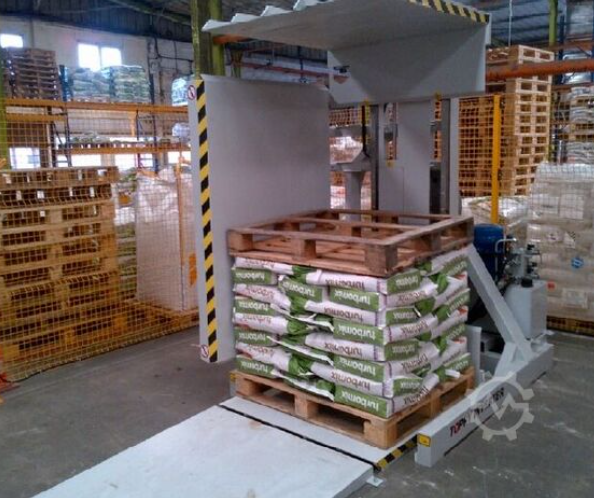
Dive Deeper
Let me share a story about a client in the meat export business. They were shipping their products on high-quality, heat-treated wooden pallets that cost them about $25 each. They were shipping 100 pallets a day. That's $2,500 per day, or over $600,000 a year, just on pallets they would never see again. Furthermore, about 3% of their product was damaged by manual re-stacking when they had to switch pallet types for a specific customer. We installed a pallet inverter that allowed them to receive goods on cheap pallets, transfer them to their internal plastic pallets for production, and then transfer them to low-cost, one-way shipping pallets for export. Their payback period on the machine was less than nine months, just from the pallet cost savings alone. The reduction in product damage and labor savings were a bonus.
Calculating Your Payback Period
To justify the investment, you need to look at the numbers. Here’s a simple framework to calculate your potential savings. This is the kind of analysis a practical leader like Javier Morales would demand.
| Cost Reduction Area | How to Calculate It | Example (Annual Savings) |
|---|---|---|
| Labor Savings | (Number of workers re-assigned) x (Annual salary + benefits) | 2 workers x $20,000 = $40,000 |
| Product Damage Reduction | (Annual value of goods shipped) x (% damage rate reduction) | $10,000,000 x 2% = $200,000 |
| Pallet Cost Savings | (Number of pallets switched/day) x (Cost difference/pallet) x (Operating days/year) | 100 pallets x ($25 - $5) x 250 days = $500,000 |
| Increased Throughput | (Value of extra pallets processed/hr) x (Operating hours/year) | Varies greatly, but can be significant |
| Total Annual Savings | $740,000+ |
When you lay out the numbers this way, the investment in automation often becomes an obvious financial decision.
The Hidden Costs of the Wrong Choice
The ROI calculation also needs to consider the costs you avoid. This is especially true when dealing with aging equipment, a key challenge for many established factories.
- Downtime: An old or unsuitable machine will break down. How much does it cost your business for your entire line to be stopped for four hours waiting for a repair?
- Maintenance: A standard painted steel machine in a washdown environment will rust. You will spend constant time and money on repainting and fighting corrosion, only to lose the battle eventually.
- Recalls: This is the ultimate hidden cost. The cost of a single product recall in the pharmaceutical or food industry due to contamination can run into the millions, dwarfing the initial cost of the right equipment.
Long-Term Value: A Partner, Not a Supplier
Finally, the ROI isn't just about the first year. A quality machine is a 15- or 20-year asset. This is where our philosophy at SHJLPACK, "TOTAL SOLUTION FOR WRAPPING MACHINE," becomes critical. You are not just buying steel; you are investing in a long-term partnership. A good partner provides reliable service, readily available spare parts, and expert advice as your needs evolve. This long-term reliability and support is a crucial part of the machine's overall value and ensures it continues to deliver returns for years to come.
What overlooked details can make or break a pallet inverter project in Brazil?
You've done your homework. You've chosen stainless steel, decided on full automation, and your ROI calculation looks great. You feel ready to sign the purchase order. However, in my years of helping clients install these systems, I've seen promising projects get derailed by small, overlooked details. These are the kinds of issues that don't appear on a spec sheet but can cause major headaches during installation and operation. Getting these details right is the difference between a smooth startup and a frustrating, costly delay.
The most commonly overlooked details include failing to precisely define your load characteristics (e.g., stable boxes vs. shifting bags), not planning for proper installation and maintenance access, underestimating the importance of local support in Brazil, and not ensuring the machine's clamping pressure is gentle and adjustable enough for your specific products. Addressing these points before purchase is critical for success.
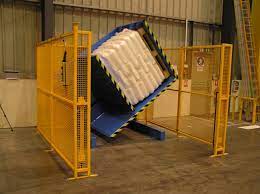
Dive Deeper
I once had a client, a pharmaceutical company, that was very thorough. They specified a 316L stainless steel, fully automated pallet inverter. The project looked perfect on paper. But they missed one detail. They tested the machine with boxes of product, but they didn't test it with their half-full pallets of empty glass vials that came from their supplier. When they tried to invert the first real-world load of vials, the standard clamping pressure was too high. The sound of shattering glass was heartbreaking. The project was delayed by weeks while we engineered a custom, ultra-low-pressure clamping system. This experience taught me that the machine must be designed for your worst-case load, not just your easiest one.
Product and Pallet Specifics Matter
You must analyze every type of load your pallet inverter will touch.
- Load Stability: Is your product a perfectly stable, shrink-wrapped block of boxes? Or is it a pallet of bags that can shift, or barrels that can roll? Unstable loads may require side-support walls or a top-press plate to keep them secure during inversion.
- Product Fragility: As my story illustrates, clamping pressure is critical. A system for handling frozen blocks of meat needs powerful, secure clamping. A system for handling vials of medicine or bags of sensitive powder needs gentle, precisely controlled pressure. A good system will have adjustable pressure that can be set for different product recipes.
- Pallet Types: Brazil has its own standard pallet, the PBR pallet, which has specific dimensions. Your machine must be designed to handle PBR pallets, as well as any other types you use, such as plastic pallets, Euro pallets, or CHEP pallets. Ensure the clamping range and base of the machine are compatible with all of them.
The Importance of Factory Acceptance Testing (FAT)
This is my single most important piece of advice: Never skip the Factory Acceptance Test. Before the machine is shipped from the manufacturer's factory, you must test it with your own products and pallets. Send them a pallet of frozen meat, a pallet of your most fragile vials, and your heaviest load. Watch the machine run a full cycle. This is your chance to catch problems like the clamping pressure issue before the machine is on a container ship halfway across the world. A FAT might cost a little extra in time and travel, but it can save you ten times that amount in on-site modifications and delays.
Local Support and Spare Parts Availability in Brazil
Your high-tech machine from Germany, Italy, or China is a great asset—until a sensor fails. If you have to wait three weeks for a spare part to clear customs, your automated line becomes a very expensive manual line. Before you buy, ask the hard questions:
- Do you have a service technician based in Brazil? Or a certified local partner?
- What is the guaranteed response time for a technician to be on-site?
- Do you stock critical spare parts (sensors, motors, belts) in a warehouse in Brazil?
- Can you provide support documentation and machine interfaces in Portuguese?
A "yes" to these questions is a key indicator that you are dealing with a true strategic partner who understands the realities of operating in Brazil, not just a company trying to sell you a box.
Conclusion
Choosing the right pallet inverter for Brazil's demanding sectors requires focusing on hygienic design, smart automation, and a strong supplier partnership. This ensures efficiency, compliance, and long-term success.



